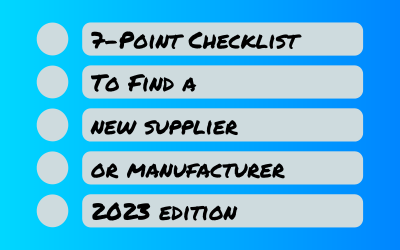If you’re importing your goods through international borders, there are a lot of factors that your business needs to consider. From the cost of production to the time it takes to transport goods, as well as the regulations and tariffs imposed – there are a lot of moving parts to a successful enterprise. When unchecked, taxes can add up to the cost of goods and eat into your business’ profit margin, so it’s important to understand exactly what you’ll need to pay and when.
Many companies prefer to import products from Mexico to the US versus more common options like China, and they prefer it for a number of economical reasons. In this article, we will be taking a closer look if there are any tariffs on products that are imported from Mexico to the United States, and we will also be exploring some of the other considerations that you need to bear in mind when importing goods from Mexico.
What are Tariffs and how do they work
Tariffs are taxes that are imposed on goods or services when they move across borders. When imported, goods are usually classified according to their product type and country of origin and labeled for different rates of applicable duties.
The most common way to access taxes is by ad valorem rate. But they can also have different duty assessment types depending on the circumstances, taking a car as an example:
- Ad valorem rate: a certain percentage of a good’s value, such as 10% of the value of an imported car
- Specific rate: a fixed amount per unit of a good, such as $1,000 for each imported car
- Compound rate: a combination of both an ad valorem rate and a specific rate, such as $1,000 for each imported car plus 10% ad valorem.
Why are Tariffs Imposed on Imported Goods?
While economists often argue that free trade policies between markets are ideal, many governments still impose tariffs in order to encourage and protect the domestic production of goods.
One of the unfortunate realities of the modern world is that goods from abroad are often much cheaper for a variety of reasons – lower wages, less strict control of raw material production or simply differing rates of business taxation all factor into the equation. By imposing tariffs, the prices of these imported goods are brought to a level that is comparable to or more expensive than domestically produced goods in order to prevent goods imported from cheaper countries from flooding the market and drastically undercutting locally sourced products.
They aren’t just protectionist tools either, tariffs can also be used as political tools. Drawing from a recent example, it’s easy to see how the tit-for-tat tariffs have escalated between the US and China in a seemingly never-ending feud, from which both countries are suffering economically.
Tariff-free trade between the United States and Mexico
Mexico is one of the United States’ largest trading partners under the US–Mexico–Canada Agreement (USMCA), which is an evolved version of the North American Free Trade Agreement (NAFTA). This agreement has brought great benefits to both parties by eliminating barriers to trade, opening the floodgate to allow a high volume of duty-free trades worth billions of dollars across the US-Mexico border daily, while countries that do not share similar free trade relations are subjected to changes in regulations and added costs to trade.
The Mexican government has strategically enhanced the efficiency and growth of the Mexican economy by removing tariffs through this free trade agreement. Under the USMCA, there are almost zero applicable tariffs for US and Canada exports to Mexico, making the country an incredibly enticing prospect for American countries looking to lower production costs.
The same applies when it comes to imports from Mexico to the United States, where most products are not subjected to import duties. For the few products that do have import duties, the rate is reduced to a much lower level that is still more favorable than importing from other countries. This has effectively strengthened US-Mexico long-term strategic partnership that has mutually beneficial effects.
How to qualify for tariff-free Imports under the USMCA
To be eligible for the USMCA and enjoy tariff-free or reduced tariffs, some criteria must be met. Businesses are required to seek clearance from the U.S. Customs and Border Protection (CBP) and provide documentation of the commodity, including the Certification of Origin.
The Certification of Origin can be in any format and may be completed by either the importer, exporter, or producer. This will consist of details of the importer, exporter, producer(s), Harmonized System (HS) classification of the goods as well as the origin criteria.
The good news is if you’re importing identical goods, you can also apply for a blanket period of up to 12 months. This will then allow for multiple shipments into the United States when the certificate is in effect.
Choose the right supplier from Mexico
Mexico is a great choice for imports into the United States. Imports from Mexico are at very attractive prices due to the relatively low cost of goods, the cheap shipping fees and tax waivers – not to mention the skilled workforce and reliable manufacturing plants that make Mexico one of the world’s leading manufacturing powerhouses..
Are you ready to start importing from Mexico? At Zipfox, we have hand-picked each one of our Mexican manufacturers, vetting them for quality and capability. Our suppliers have the experience, the knowledge and the facilities to help you in your journey. If you’re ready to get started, click below to see what Mexico has to offer your business.











